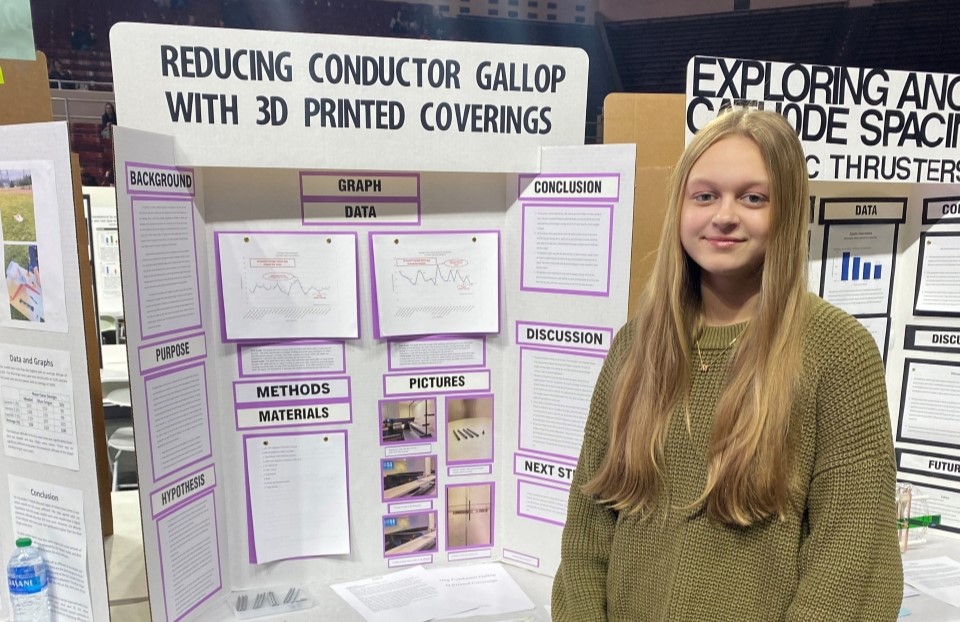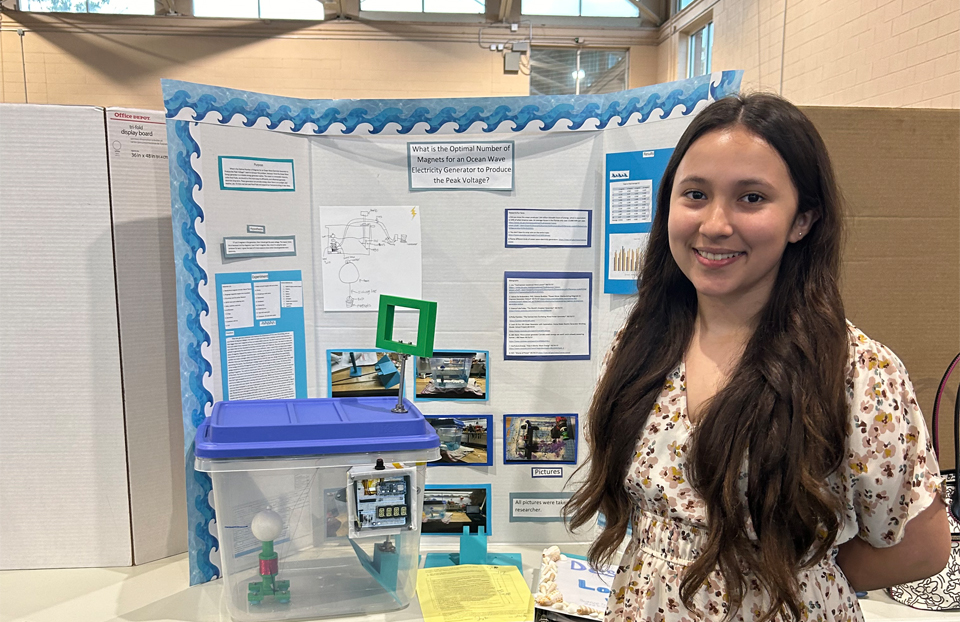This middle schooler is taming the wind with science

For the fifth year, The Lemelson Foundation is giving $100 awards to outstanding young inventors in Society Affiliate Fairs with middle school participants around the country. The prize was created to reward young inventors whose projects exemplify the ideals of inventive thinking by identifying challenges in their communities and creating solutions that will improve lives.
When the weather outside is frightful, nothing is less delightful than losing your electricity. Beyond being an inconvenience, power outages can be dangerous, especially when preventing people from heating their homes or powering medical devices.
Having experienced power outages herself, including witnessing power lines collapsing during winter storms, Meredith Lundy was all too familiar with the risks associated with weather-related power disruptions. Seeing how dangerous and costly falling power lines can be, Meredith, an eighth grader at St. Francis of Assisi School in Louisville, Kentucky, was inspired to find a solution.
She began by investigating the root causes of outages and learned about the issue of power line galloping, which is the back-and-forth movement of power lines in strong winds. Galloping, especially in icy conditions and at high speeds, can greatly increase the risk of power lines falling and of homes and businesses losing power. As Meredith investigated the issue, she found some existing solutions for galloping. For example, a Stockbridge damper is a device which can be clamped onto the ends of power lines near transmission towers; they help suppress vibrations caused by wind.
Meredith wondered why, given that the challenges of galloping and ice can affect the entire length of a power line, there are limited technologies available that can be deployed across the entire line. Her curiosity inspired her to design her own cable coverings—she hypothesized that such coverings could more effectively prevent power outages caused by galloping and icy conditions, while also being cheaper to produce and easier to deploy.
To this end, Meredith designed and 3D printed four different prototypes of cable coverings to determine which, if any, were most effective in reducing powerline galloping due to wind, and sagging due to ice. Each prototype was marked by different physical shapes and characteristics: a grooved cylinder, a smooth cylinder, a grooved triangle and a spiral.
“I did a lot of research to see which shapes are the most aerodynamic,” said Meredith. “I also took into consideration how economical each covering would be and how easy it would be to produce. I used several CAD programs to ensure each covering was designed to be as detailed and precise as possible.”
She designed the cable coverings using programs including Onshape, TinkerCad and 3D Builder, and printed them on epoxy photopolymer printer. She also printed ice replicas that could be used in her tests to measure how the coverings could withstand added weight. She tested the cable coverings to determine how they responded in windy conditions likely to cause galloping and catalogued each covering’s performance based on much or little the line moved, as well as how fast or slowly. She completed numerous trials, adjusting variables such as the length of the line and how much ice was suspended on it, all to identify which performed best across a wide range of conditions and configurations.
At the culmination of her research, Meredith identified a clear winner. She explains, “I discovered that the spiral covering performed the best in icy conditions, meaning it moved the least and the slowest. Knowledge of the way different shaped cable coverings affect conductor gallop can help engineers prevent power lines from collapsing when subjected to wind and icy conditions.”
Impressively, Meredith’s spiral cable coverings are also lighter and have potential to be produced less expensively than current technologies like the Stockbridge damper—potentially making a big impact and reducing risk of power outages wherever storms may strike.
For her innovative research, Meredith was awarded the Lemelson Early Inventor Prize at the Louisville Regional Science and Engineering Fair. “Receiving this award has allowed me to become more confident in my research,” said Meredith. “I am eager to continue my research on this topic because I know there is so much more to learn and so many more people to help.”


